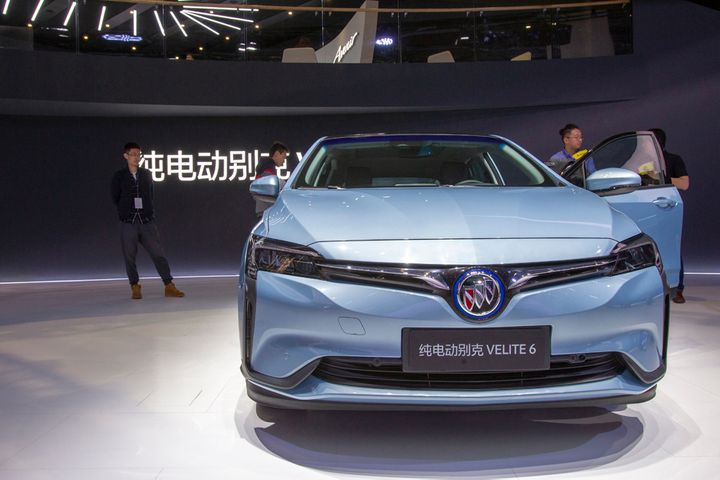 SAIC-GM Reveals First Electric Buick at Shanghai Auto Show
SAIC-GM Reveals First Electric Buick at Shanghai Auto Show(Yicai Global) April 25 -- SAIC General Motors has released Velite 6, the first electric Buick, at the Shanghai Auto Show 2019, and two more clean energy Buicks will be rolled out this year, as well as one electric Chevrolet, according to the firm's general manager.
"After the first EV comes out, the speed will be amazing," Wang Yongqing told Yicai Global. Velite 6 is also SAIC-GM's first new energy vehicle launched in China. Before this, the joint venture's strategy for its NEV business has been slow, Wang added, blaming the low-profit-margin environment and diminishing government subsidies.
"Pure electric vehicles are not profitable in the current situation," the boss of the Shanghai-based firm said, adding that the real demand for NEVs is not that big as the sales figures may imply. This is why carmakers need to seek a balance between the market and costs, he added.
"The market can barely make the ends meet with the state subsidy between CNY40,000 and CNY50,000 (USD5,937 up), but what about without it?" Wang said. Many specialists are anticipating that the market will be halved after the subsidies wane, he added.
Velite 6 has a mileage of 300 kilometers between recharges, 200 km less than its peers. "We have found out that most buyers live in big cities, and they use their cars mainly for commuting," Wang said. SAIC-GM's batteries could go as far as 600 km but that would mean excess production costs, he added.
Despite the hurdles, the firm is entertaining a sense of discovery in the world's biggest NEV market. SAIC-GM is still exploring NEV technologies amid uncertainties in policies and the market, said Wang. "Plug-in hybrid electric vehicles will possibly become the new trend if no battery breakthroughs are achieved and China cancels all the subsidies," Wang projected.
However, an electric car is not a good investment, according to the GM. The NEV market lacks a subdivision of a second-hand market, according to Wang. The reason is partly because these types of cars lose 80 percent of their value in three years of use, he said.
The company is balancing its resources and advantages. "Our two shareholders, SAIC Motor and General Motors, both have their technological strengths," Wang said, adding that the key to success is finding out how to leverage these technological advantages within reasonable costs.
Editor: Emmi Laine